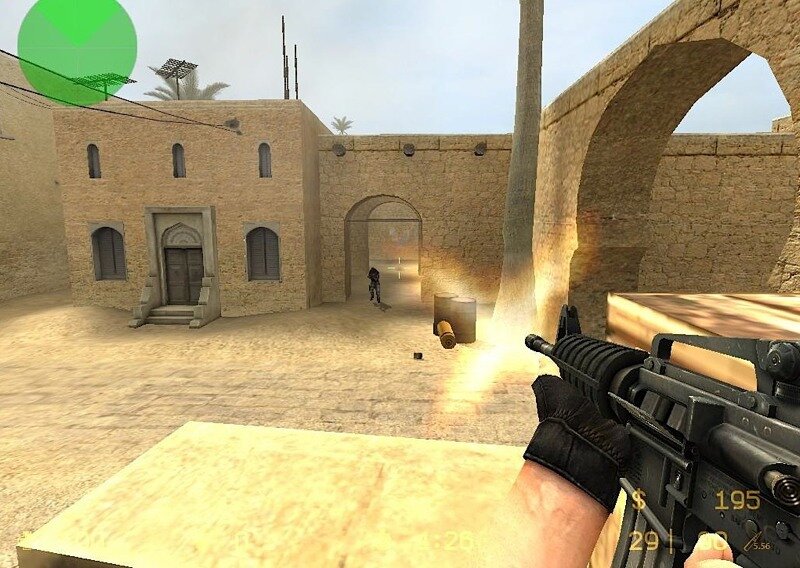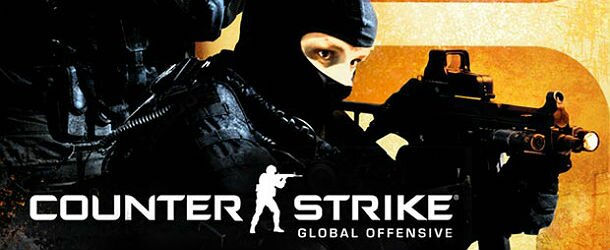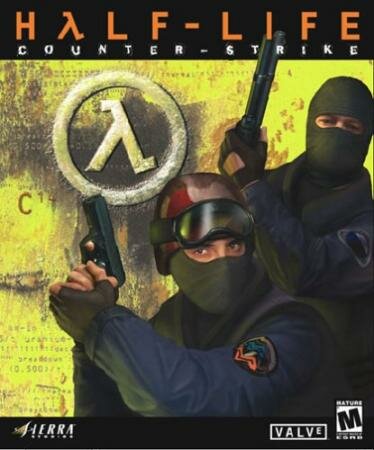Counter-Strike may be one of the most beloved franchises by PC gamers, originally a mod for Half Life, Valve decided to pick up Minh Le and Jess Cliffe, the two devs in charge of the mod, to make it a fully fleshed out game.
The original game consisted of two sides, Terrorists and Counter Terrorists. The two teams battle it out in different multiplayer modes and are able to spend in-game credits to buy upgrades on guns and unique items for the next round.
 Starting a Franchise
Starting a Franchise
Counter-Strike was a roaring success, backed with a loyal fan-base who craved for more. Electronic Arts were selling in stores and Valve pushed CS out to their Steam service. Fans in Brazil, Germany and many other countries loved the simplicity of the game and the fun to be had.
This screamed franchise and at the time, Valve was more open to making games, rather than allowing rumors and hints to keep the hype train going for years, while they sit back and wonder whether a sequel would really be worth it.
Condition Zero
Four years after the original, Valve announced Counter-Strike: Condition Zero. By looking at the development team, this was a sure set winner, Gearbox Software, Turtle Rock Studios and Ritual Entertainment were all on board to help Valve develop the game.
However, stepping into the game’s past shows where it all went wrong. Originally, Rogue Entertainment developed the game, but passed it on quickly to Gearbox Software, who redesigned the weather effects and added new weapons like Molotov cocktail and tear gas.
After missing a deadline in 2002, Valve decided Gearbox Software was incapable of reaching their goal at an efficient time, Valve then passed the game onto Ritual Entertainment, who proceeded to start over again with 20 unconnected missions and updated bot AI, but after initial reviews came under 60 percent, Valve employed Turtle Rock Studios.
Turtle Rock Studios were a young development team at the time, now they are currently working on Evolve. The team essentially beefed the AI bots a bit more and then switched back to Gearbox’s 12 missions, with additional Deleted Scenes that showed Ritual’s missions.
Despite the long haul, Counter-Strike: Condition Zero was still received pretty poorly and is seen as the worst in the series. The lack of vision from any studio made it all about fixing the game and trying to get it out to launch, but each studio had their problems that stayed on the end product.
Stepping into the Source Engine
 The failure of Condition Zero forced Valve to make another Counter-Strike title quick, one that would put gamer’s minds off the bad title and focus on a new fresh game, one that would take advantage of the new Source engine Valve had been working on.
The failure of Condition Zero forced Valve to make another Counter-Strike title quick, one that would put gamer’s minds off the bad title and focus on a new fresh game, one that would take advantage of the new Source engine Valve had been working on.
Instead of making a new game, Valve decided to take the original Counter-Strike and rebuilt it on the Source engine, adding more textures and graphics options into the game, while maintaing the same simplistic gameplay.
Counter-Strike: Source showed the first Dynamic Weapon Pricing, where a weapon price would be determined based off its popularity yesterday, making it easier to buy unpopular items, instead of sticking to the overpowered guns.
This time, Valve worked with one developer, Hidden Path Entertainment, who would continue to serve as lead developer on CS: GO. There was no delays, no questionable single player and no half assed mechanics that came from one studio, but weren’t worked on by the next studio that took over the project.
It received impressive reviews, knocking Counter-Strike back into the 90/100. Valve had betas for a few months through the Valve Cyber Café Program and also sent the beta out to any buyers of Condition Zero, pushing the game out to fans and gaining a lot of feedback.
Counter-Strike: Global Offensive
 In 2012, we finally got the new Counter-Strike we had been waiting years for, after 8 years of nothing from Valve. After the failure of Condition Zero and other rushed failures, Valve had became this dormant beast of a developer, working on titles for almost a decade before releasing any news about them.
In 2012, we finally got the new Counter-Strike we had been waiting years for, after 8 years of nothing from Valve. After the failure of Condition Zero and other rushed failures, Valve had became this dormant beast of a developer, working on titles for almost a decade before releasing any news about them.
The way Valve handled the beta for CS: GO was rather impressive and shows how much the development studio had come along since early 2000. Not only did Valve push out several betas to lucky invitees at events, but they got professional CS Source players to play-test the game and give feedback.
What this did was remove any mechanics and features that were holding the game back from a competitive standpoint, allowing the best players in the world to show how good they were, while also letting newbies have a chance to play games without getting mauled.
Valve built the game around everything they had developed in the past five years, the Anti-Cheat system was integrated into CS: GO, Steam Workshop allowed custom development of maps and weapons and was built on an updated version of the Source engine, to fit the design of previous games.
When CS: GO finally hit the market, people went crazy, even though the Counter-Strike franchise has never been the biggest in the world, it had sold around 15 million units at that point and CS: GO was by far the most hyped game of the series.
The Future
Nobody quite knows what Valve is planning, but we assume CS: GO will continue to be the game of choice for the next few years, before Valve even thinks about adding a new game to the franchise. If we look at things like Portal 3, Half Life 3, Left 4 Dead 3 and other titles, Valve appears to be in no hurry to please fans who request the game now.
This is not all bad, CS: GO is continuously updated with new content from both Valve and the community, allowing friends to create maps and custom games. It also has a big eSports scene behind it right now, meaning if a new game were to come out players would have to quickly adopt new mechanics, something we don’t often see in the professional scene.

 Starting a Franchise
Starting a Franchise